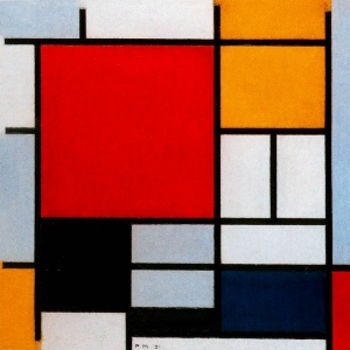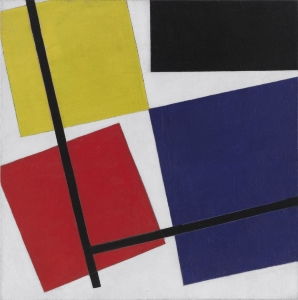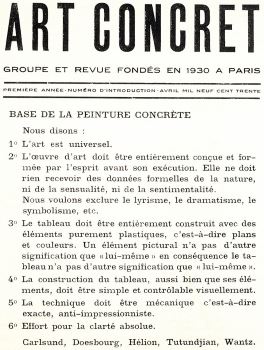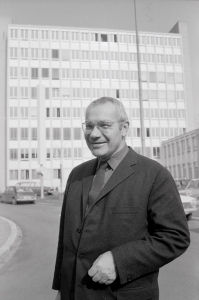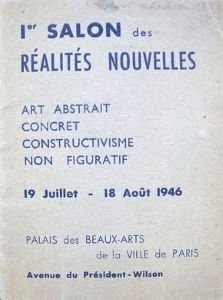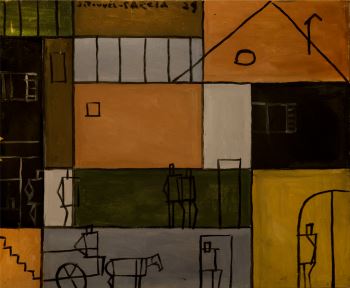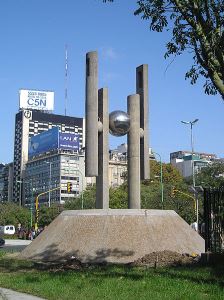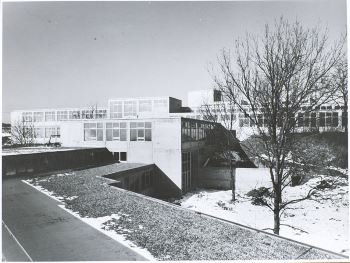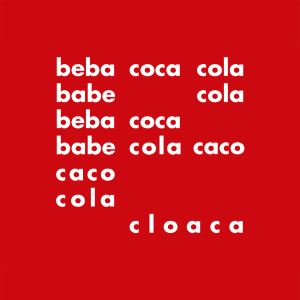GAC 100 (Product #3910)
GAC 200 (Product #3920)
GAC 400 (Product #3940)
GAC 500 (Product #3950)
GAC 700 (Product #3970)
GAC 800 (Product #3980)
GAC 900 (Product #3990)
PRODUCT DESCRIPTION
GACs can be blended with GOLDEN Acrylic Paints to extend the paint, regulate transparency, create glazes, increase gloss, reduce viscosity or improve adhesion and film integrity. The GAC polymers can also be used for binding pigment solids for various effects and surfaces. Unlike the other GOLDEN Mediums and Gels, GAC Acrylic Polymers have only a minimum amount of thickeners, levelers, defoamers and surfactants to ensure good film formation.
The consistency of the GAC polymers is very fluid, and thinner than other GOLDEN Mediums. GOLDEN Fluid Acrylics are slightly thicker than the GACs, but will be the color line least changed in viscosity with any addition of a GAC polymer.
Each GAC product represents a unique polymer that offers certain specific attributes. Therefore, each GAC will have its own unique benefits and applications. Refer to the individual product description of each GAC (below) to find the proper medium to use for a particular application.
PRODUCT APPLICATION
Mixing
GAC polymers should be gently stirred or rocked back and forth prior to use, but should never be shaken, as this will incorporate significant amounts of foam which will be very difficult to eliminate. Foam can severely affect the transparency of the film causing an apparent foggy or hazy quality. When applying with a brush, use minimal agitation and force, and do not overwork, as this too will result in foaming.
Spraying
If spray application is desired, blend with GOLDEN Airbrush Medium. Start at 2 parts GAC Medium to 1 part GOLDEN Airbrush Medium. When faster drying is required, replace the Airbrush Medium with GOLDEN High Flow Medium.
Varnishing
The GAC polymers are intended for use as binders, modifiers or additives for acrylic paints. They are not intended for use as a final varnish. Golden Artist Colors manufactures two different varnish systems, Polymer Varnish and Mineral Spirit Acrylic (MSA) Varnish (See the GOLDEN Varnish Information Sheets for more details).
ADDITIONAL INFORMATION
Support Induced Discoloration:
Common supports (e.g. cotton canvas, linen, masonite) contain water-extractable materials that can cause discoloration in transparent glazes. To minimize Support Induced Discoloration (S.I.D.), prime support with 2 coats of GOLDEN GAC 100.
Replacing Rabbitskin Glue:
Traditionally, rabbitskin glue (also known as hide glue) was used to reduce the flexibility of canvas before painting. Although the rabbitskin glue does reduce flexibility, it is extremely brittle. It is hygroscopic, which means that it will always be water-soluble. Even when the glue is completely dry, high humidity will re-introduce water into the film, causing it to soften or swell up. Over time, this constant swelling and drying of the film can cause severe paint-film cracking and delamination.
GAC 400 can be used in a similar fashion for stiffening canvas. Apply directly to the front of the raw canvas for maximum stiffness. It is imperative that it be applied directly to the raw canvas. It is ineffective over any other medium, and most likely will flake off and cause delamination of subsequent paint layers. Since GAC 400 is not effective against oil penetration, the use of GAC 100 over GAC 400 is recommended for oil painters
Note: Since GAC 400 is brittle, it is important that it not be rolled tightly, or bent back upon itself. This will cause cracking of the polymer film and may transfer cracks into additional paint layers. This is especially a risk with cured oil paints.
Linseed Oil Blocker:
Two coats of GAC 100 before gessoing will substantially reduce linseed oil penetration into the canvas fibers. If stiffness and oil-blocking are desired, apply a coat of GAC 400 to the front, directly into the raw canvas, followed by one coat of GAC 100 onto the front of the canvas. Follow this by the desired number of gesso coats.
GAC POLYMER INDIVIDUAL PRODUCT DESCRIPTIONS
Use the below descriptions to decide which attributes are best-suited for a particular application:
GAC 100: Universal Acrylic Polymer / S.I.D. Blocker / Most Flexible GAC Polymer.
- This polymer is one of the most universal used in paint manufacturing. Artists who had used “Rhoplex” (a registered trade name) will find that this GAC most closely reflects the properties to which they were accustomed.
- The most flexible with a moderate level of tack and gloss.
- Useful for diluting and extending colors, especially when film flexibility and integrity are important characteristics.
- Wets pigment surfaces well. The most ideal for artists formulating their own paints.
GAC 200: Increases Film Hardness of Acrylic Paints / Increased Non-porous Surface Adhesion.
- The hardest and least flexible of any Golden Acrylic product. Caution is advised when using this product alone.
- Used in its pure form, it is limited to applications on rigid supports, as its lack of flexibility may lead to cracking when flexed. When used alone it needs to be applied and left to dry at a minimum temperature of 70F / 21°C.
- Ideal as an additive to acrylic paints to increase film hardness and reduce dry film tack.
- Improves adhesion to non-porous surfaces; however some surfaces, such as glass and glazed tile, will not allow for a permanent bond
- Dries with high gloss and excellent film clarity.
- Promotes cleaner edges of hard-edge techniques. The harder paint film has less “pull” as the masking tape is removed.
GAC 400: Fabric Stiffener / Rabbitskin Glue Alternative.
- Dries to a very hard and stiff film.
- Most useful for priming fabrics (cotton, linen, silk, etc.) when stiffness is desired.
- Used as a rabbitskin glue alternative when applied directly to raw canvas or linen.
- Allows sculpting and shaping of draped fabrics.
- Note: Optional heat settingwill decrease water sensitivity butalso releases low levels of formaldehyde; therefore if choosing to heat setit is recommended that adequate ventilation be provided.
GAC 500: Self Leveling Applications / Hard Yet Flexible / Best Isolation Coat Medium for Spray-Application.
- Unique balance of film hardness and flexibility.
- Mix 2 parts GAC 500 to 1 part High Flow Medium to produce a good spraying, fast-drying isolation coat.
- Beneficial as an additive for acrylic paints for increasing mar resistance and decreasing dry film tack, without disturbing the balance between hardness and flexibility.
- Useful when working on flexible or rigid supports.
- Offers a self leveling working quality.
- Dries to high gloss film with good clarity/transparency.
- Useful to hard-edge painters to seal masking tape for cleaner edges. Apply over masking tape. Let dry before applying additional paint layer.
GAC 700: Increases Film Clarity.
- Dries to a clear, high gloss film, with moderate hardness and exceptional transparency.
- Offers reduced shrinkage upon drying.
- Note: This emulsion has a tendency to generate foam during application. Exercise care while brushing.
GAC 800: Reduced Crazing of Dried Films / Best for Direct Pouring.
- Most useful as an additive for acrylic paints when pours/puddles are desired. Most acrylics will craze, which is the formation of valleys that run through a pour/puddle nullifying the uniformity of the film. Such crazing is the result of shrinkage forces exerted during the drying process. GAC 800 stands alone in its resistance to such film discontinuity.
- Dries with good gloss and film flexibility, but with a slight “hazy” quality.
- Useful as a modifier when adhesion to chalky surfaces is desired.
GAC 900: Increases Launderability of Acrylic Paint.
- Designed to be used as a modifier for acrylic paints for painting on clothing. See the GOLDEN Acrylics on Fabric Application Information Sheet for more extensive information.
- Offers a soft, pliable feel and when properly heat-set, provides excellent laundering stability.
- Blend with GOLDEN Heavy Body, Matte or Fluid Acrylics for brush or screen application.
- Mix with GOLDEN High Flow Acrylicsfor “Tie-Dye” effects.
- Note: The heat-setting process will release low levels of formaldehyde; therefore it is recommended that adequate ventilation be provided.
GOLDEN Acrylics on Fabric Application Information Sheet
GOLDEN ACRYLICS ON FABRIC
Applications. Use the information below to select the proper paint system for your desired application method.
APPLICATION DESCRIPTION
The four lines of GOLDEN Acrylics of interest to fabric artists include: High Flow, Fluid Acrylics, Heavy Body, and Matte Colors. The main difference between each of these lines of acrylic colors is viscosity (thickness) or consistency. High Flow Acrylic Colors are the thinnest and are ready to spray. Fluid Colors are similar in consistency to a heavy cream. Heavy Body and Matte Acrylics are thick, with a buttery consistency. These various acrylic paint lines, each using the same lightfast pigments, allow the artist to combine the effects of spraying, staining, brushing and other application techniques.
TECHNIQUES FOR FABRIC PAINTING
Hand Brushing
GOLDEN Heavy Body (including Iridescent and Interference Colors), Matte, Fluorescent, and Fluid Acrylics are appropriate for hand brushing techniques and heat-setting is not required. To provide a softer hand1, which also prevents cracking in thicker passages, blend 1:1 with GAC 900 or GOLDEN Silk-screen Fabric Gel (for thicker paint applications). The GAC 900 and the Silk-screen Fabric Gel contain a special polymer additive that is designed to impart a softer hand, while offering excellent launderability 2 when properly heat-set (see directions below)
Airbrushing/Spraying
For best results, blend GOLDEN Fluid Acrylics with GOLDEN Airbrush Medium. Start with a 1:1 mixing ratio, and increase amount of GOLDEN Airbrush Medium as desired to increase sprayability and/or transparency. When artwork is complete, spray a thin coat of GAC900 for least color loss. Airbrush Medium can also be substituted with GAC900 if a softer hand is desired (follow heat-set directions below). GAC900 is thin enough to help with making the Fluid Acrylics sprayable much like the Airbrush Medium. For durability and washability in a spray application, these are the recommended systems, and will perform significantly better than GOLDEN High Flow Acrylics alone.
GOLDEN Fluids blended with GOLDEN Airbrush Medium do not require heat-setting for launderability, yet equal the performance of fabric paints that do. If an artist already possesses Fluid Acrylics for canvas painting, it is not necessary to purchase fabric paints in order to do fabric painting; they just need to get GAC900. Allow for garments to cure for at least 4 days prior to washing (Note: heat-setting will speed the curing time required and should increase the launderability).
GOLDEN Heavy Body, Matte, Iridescent, Interference and Fluorescent Colors can also be sprayed onto fabric; however, their thicker viscosities warrant more dilution with GOLDEN Airbrush Medium which yields weak, transparent coverage.
Although not recommended for fabric use, GOLDEN High Flow Acrylics may be blended 1:1 or more with the GAC900 to aid in washfastness (properly heat-set according to directions listed below). This blend, although better than GOLDEN High Flow Acrylics alone, is still not equal to the launderability performance of the Fluid Acrylics/Airbrush Medium mixture.
Areas containing soft spray applications such as gradated areas, shading, and any skylines should be sprayed with a light coat of GAC 900 to increase launderability.
Tie-Dye/Staining
The viscosity of GOLDEN High Flow Acrylics is ideal for tie-dye and staining applications. Pre-wetting the fabric with water and using the GOLDEN High Flow Acrylics in place of fiber-reactive dyes creates brilliant patterns. Adding GOLDEN Acrylic Flow Release can also help the paint penetrate into the fabric (follow directions on label). To increase the launderability, blend the GOLDEN High Flow Acrylics 1:1 with GAC900. After applying the paint to the fabric, wait for it to be completely dry before heat-setting or washing. This will maximize the amount of color that “sets” 3 into the fabric. If GAC900 is blended with the acrylic paints, follow the directions for heat-setting below. GOLDEN Fluid Acrylics may also be used for this technique, but will require the addition of water to thin to the proper viscosity, along with the GAC900 to increase the launderability.
Silk-Screening
GOLDEN Heavy Body, Matte, Fluorescent, or Fluid Colors blended 1:1 with GAC900 or Silk-Screen Fabric Gel produce silk-screen inks with excellent durability on fabric. The mixture used is dependent on two factors: the material to be printed and personal preference of paint consistency. (Refer to GOLDEN Information Sheet on the Silk-Screen Fabric Gel for the most complete information on this technique).
If screening onto heavy, cotton material, a thinner mixture of Fluid Colors and GAC900 may be desired, as its thin consistency helps to penetrate into material. If printing on a polyester or synthetic material, a pastier mixture of Heavy Body Acrylics and Silk-Screen Fabric Gel will work better due to a lower tendency of the ink to “bleed” 4 into the material. Some experimentation is needed to find the system that is best suited for your work.
Mixtures (1:1) from Thickest Consistency to Thinnest
- Heavy Body or Matte Acrylics/Silk-Screen Fabric Gel
- Heavy Body or Matte Acrylics/GAC900
- Fluid Acrylics/Silk-Screen Fabric Gel
- Fluid Acrylics/GAC900
- High Flow Acrylics/GAC900
Both GAC900 and Silk-Screen Fabric Gel impart softness of hand, while offering excellent launderability. Proper heat-setting is required for both products (see below for heat-setting instructions).
RECOMMENDATIONS
Proper product selection, heat-setting, and care ensure long garment life.
Application of Large Areas or Long Lines
Filling in large areas with thick paint will produce a very stiff, uncomfortable garment. Blend color with GAC900/Silk-Screen Fabric Gel to reduce the stiffness of the acrylic paint. If painting in a thick manner, short strokes of paint will hold better than long lines. The longer the line, the greater the chance of cracking when washed. A washing machine”s agitator may stretch the garment beyond its limit and thus cause cracking.
Material Considerations
Test materials thoroughly before large production runs or when using a unique fabric.
The looser the weave of the fabric (cotton/poly blends), the better the penetration and hold the paint will have on the material.
Thicker fabrics (sweatshirt-type weaves) should be slightly stretched with a backer-board to allow for better penetration of the paint into the material.
To increase the adhesion onto any fabric a very light misting of water (e.g.-with a plant-mister) will increase the penetration into the material. Care should be taken with this technique, as over applying the water could result in bleeding of the color.
Heat-setting
The heat-setting process will release low levels of formaldehyde; therefore adequate ventilation is recommended when heat setting.
Fabrics treated with GAC900/Silk-Screen Fabric Gel-modified paints must be heat set if maximum launderability is necessary. Products conform to ASTM D4236. All GOLDEN products should be used in accordance with safe handling practices. Read product labels prior to use. The polymer must first air dry to the touch to form the initial bond with the fabric, followed by one of the heat-set methods listed below:
- Heat Press according to press manufacturers’ recommendations.
- Iron for 3-5 minutes with a medium-hot iron on the reverse side (side opposite of the application). On delicate fabrics where lower heat levels must be used, a longer ironing time will be necessary.
- Professional Oven Cure for 2-3 minutes at 300F; 4 minutes at 250F.
- Clothes dryer: Commercial: medium-high temperature for 20-40 minutes. Household: high temperature for 40-50 minutes.
Washing and Drying
- Let paint dry thoroughly (at least 4 days) before washing.
- Hand-washing will dramatically increase garment life.
- Always turn garment inside-out for laundering.
- Avoid hot water washing. This will tend to soften and loosen acrylic paint from the garment.
- Cold water works best for automatic washing of the painted garment.
- Heat-set when appropriate.
- Set washer to gentle cycle.
- Drip-drying instead of using the clothes dryer will increase the life of the garment.
SUMMARY
GOLDEN Artist Colors Acrylics are professional artist paints.
If properly prepared and cared for, GOLDEN Artist Colors Acrylics will produce a fabric artwork with good durability. GOLDEN Artist Colors Acrylics are produced with 100% Acrylic Polymer Emulsion. This produces a film with excellent flexibility, and chemical, water, and ultraviolet resistance. The milky emulsion dries transparent, allowing pigments to show their full color. All pigments in GOLDEN Acrylics are chosen for the greatest clarity and permanency within each chemical class. GOLDEN Acrylics dry quickly and may be painted over immediately yet complete drying/curing will take longer. Avoid freezing. Minimum film formation temperature is 48oF/9oC.
To thin, use water or GOLDEN Mediums. For slower drying, use GOLDEN Retarder. Do not mix with oils. Paint on any non-oily surface. Non-absorbent surfaces should be abraded for increased adhesion. Clean tools with soap and water. Keep tools wet during use.
DEFINITIONS
1Soft Hand – decrease in the hardness of the paint when dry, leaving a comfortable and breathable feel to the fabric.
2 Launderability – the ability for the fabric to be washed.
3Sets – after washing, it is the remaining color left in the fabric.
4Bleed – a halo effect around the brushstroke.
Quick Reference Chart for Choosing GOLDEN Acrylic Paints for Fabric Use.
| GOLDEN Acrylics to use for Fabric | Hand Brushing | Airbrushing or Spraying | Tye-Dyeing of Staining | Silk-Screening |
|---|---|---|---|---|
| High Flow Acrylics | */+ | |||
| Fluid Acrylics | * | + | * | * |
| Iridescent Acrylics | * | * | * | * |
| Interference Acrylics | * | * | * | * |
| Heavy Body Acrylics | + | * | + | |
| Fluorescent Acrylics | * | * | * | * |
| Matte Acrylics | * | * | * | |
| * Can be used for this technique + Best Recommendation for particular technique |
Quick Reference Chart for Choosing Which GOLDEN Gel/Medium to Blend with GOLDEN Acrylics for Fabric Use.
| GOLDEN Mediums to use for Fabric | Hand Brushing | Airbrushing or Spraying | Tye-Dyeing of Staining | Silk-Screening |
|---|---|---|---|---|
| Airbrush Medium | */+ | |||
| GAC 900 | + | * | + | * |
| Silk-Screen Fabric Gel | * | + | ||
| Acrylic Flow Release | */+ | |||
| * Can be used for this technique + Best Recommendation for particular technique |
Disclaimer
The above information is based on research and testing done by Golden Artist Colors, Inc., and is provided as a basis for understanding the potential uses of the products mentioned. Due to the numerous variables in methods, materials and conditions of producing art, Golden Artist Colors, Inc. cannot be sure the product will be right for you. Therefore, we urge product users to test each application to ensure all individual project requirements are met. While we believe the above information is accurate, WE MAKE NO EXPRESS OR IMPLIED WARRANTIES OF MERCHANTABILITY OR FITNESS FOR A PARTICULAR PURPOSE, and we shall in no event be liable for any damages (indirect, consequential, or otherwise) that may occur as a result of a product application.





 100% Satisfaction guarantee
100% Satisfaction guarantee







